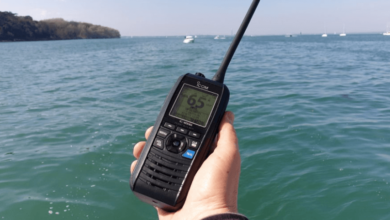Security Measures For Protecting Critical Network Components

Today, networks are the backbone of all communications and business activities. Owing to routers, switches, firewalls, and servers, this network infrastructure supports smooth and secure data flows. The fact that the number of cyber threats is ever-increasing makes it quite clear that keeping such components safe has never been so important. The blog entails different security measures one can use in safeguarding these important network components from potential threats.
1. Firewall Protection
The firewall is the primary building block in securing a network. It acts as a barrier against all the external networks to the internal network. Incoming and outgoing traffic are controlled by the firewall between the internal and external networks. Firewalls need to be configured properly to block unwanted traffic while allowing legitimate communication. It is necessary to update rules for firewalls, as well as software regularly, which takes care of all those newly included vulnerabilities and keeps the network safe from developing threats.
2. Software Updates/Patching Regularly
Keeping network components updated is the easiest and most effective security measure. Network devices such as routers and switches, all in one category with software applications, are often targeted by cybercriminals exploiting known vulnerabilities. Almost always, manufacturers will roll out some updates and patches whenever they fix a security hole in the software. One way to protect network components from attackers is by regular software updates. An automated patch management system will not forget to administer the updates on time.
3 . Network Segregation
Network segmentation is the act of dividing network components into smaller sections, with each becoming its individual isolated segment that has specific security measures for that segment alone. Isolating a network into segments will possibly contain some threat and stop it from traversing and potentially infecting the entire network. For instance, sensitive data can be placed in a dedicated segment, reducing exposure to attackers. Network segmentation minimizes damage in case of a breach while strengthening the overall security posture of the network.
4. Strong Authentication and Access Controls
Introducing strong avenues of authentication such as multi-factor authentication (MFA) to protect sensitive network components will guarantee that only authorized personnel have access to such components. Access control lists (ACLs) should also be put in place to set and enforce the rules for which users or devices can access specific network resources. Keeping access limited to critical components reduces the threat of unauthorized access and the potential for data breaches.
5. Intrusion Detection and Prevention Systems (IDPS)
The IDPS actually refers to Intrusion Detection and Prevention Systems, which are laid in place to monitor network traffic for malicious activity. An IDPS can detect deviations in behavior or patterns that indicate an attempt at attack. Upon detection of an attack, the network administrator can be alerted or the IDPS may take automatic corrective action to block the attack. The implementation of IDPS is very important to protect the critical elements of the network by identifying and preventing threats before they cause better damage.
6. Data Encryption
Data encryption is key for ensuring that network communications are intercepted by unauthorized parties. Encryption transforms data into an unreadable text that is only readable by a person having the right decryption key. Encryption is the shield that protects sensitive information in the form of data residing on servers or data traversing the network. Data encryption is extremely important for various sectors, such as any industry dealing with personal or financial information, where breaches might have dire consequences.
7. Backup and Disaster Recovery Plans
Assuming the finest security is in place, it becomes mandatory to implement security if there is a chance of either a breach or failure. Regular backup of critical components of the network including data and configurations can help restore systems in a very short time after an attack or some failure. A disaster recovery plan is to be outlined. for recovering from such breaches or events as natural disasters or some other unforeseen event. A proper and well-articulated plan of backup and recovery goes a long way toward resuming business operations with the least disruption.
8. Employee Training and Awareness
Employees are often called the first line of defense against cyber threats; therefore, providing any kind of training for people on security services is indispensable. Employees should be informed about the risks associated with phishing, social engineering, and other strategies cyber criminals frequently employ to infiltrate network components. Promoting a security-aware culture decreases the likelihood of a successful attack and keeps employees alert in safeguarding critical network assets.
Conclusion
Securing critical network assets is vital for sustaining the integrity, confidentiality, and availability of a network. Security measures such as firewalls, timely updates, network segmentation, hard access controls, and encryption help mitigate all forms of cyber threats a business might experience. Intrusion detection systems also provide vital tools when responding to security incidents, while effective backup and disaster recovery programs ensure enterprises sustain business continuity during downtime. In essence, a proactive network security strategy, coupled with employees’ training and awareness development, is central to the protection of network components and successful business continuance.



